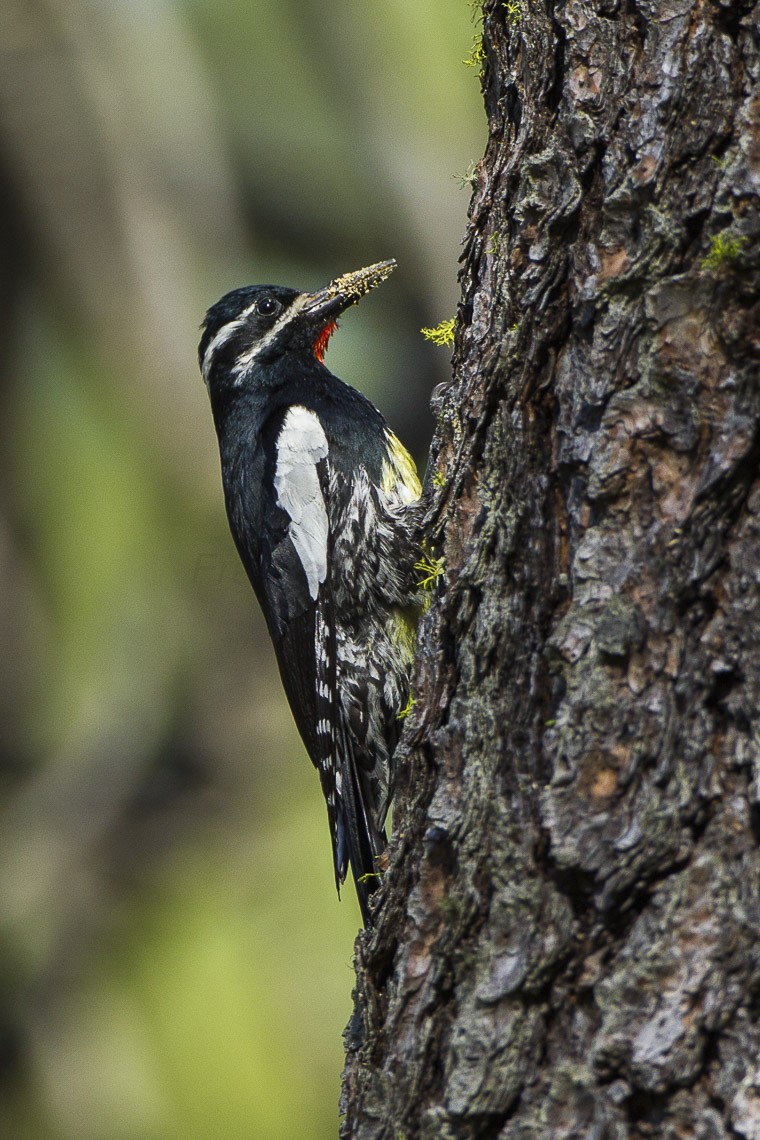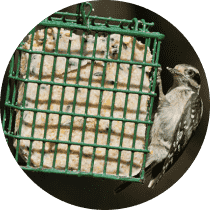Williamson's Sapsucker
A species of Sapsuckers Scientific name : Sphyrapicus thyroideus Genus : Sapsuckers
Williamson's Sapsucker, A species of Sapsuckers
Botanical name: Sphyrapicus thyroideus
Genus: Sapsuckers
Content
Description General Info
 Photo By Francesco Veronesi , used under CC-BY-SA-2.0 /Cropped and compressed from original
Photo By Francesco Veronesi , used under CC-BY-SA-2.0 /Cropped and compressed from original Description
Adult males are iridescent black on their head, back, sides and tail. They have a white stripe behind the eye and a lower white stripe across each side of the head, a red chin and a bright yellow belly. They have black wings with large white patches. The female is completely different in appearance: mainly black, with a pale yellow breast, a brownish head with black streaking and fine barring on the back, breast and sides. Originally, the female was considered to be a different species and named the black-breasted woodpecker by Cassin. Measurements: Length: 8.3-9.8 in (21-25 cm) Weight: 1.6-1.9 oz (44-55 g) Wingspan: 17 in (43 cm) They excavate a new nesting cavity each year, sometimes reusing the same tree. These birds feed on sap, mainly from conifers, but insects are their main food source during the nesting season and they also eat berries outside of the breeding period. These birds drum to establish territories. This species may be declining in some parts of its range due to habitat loss. This woodpecker is associated with mature larch forests in south-central British Columbia; less than 500 individuals breed in Canada. The habitat for this species is rapidly disappearing due to forest harvesting. The species was designated endangered in 2005. The species took its common name from Lieutenant Robert Stockton Williamson, who was the leader of a surveying expedition which collected the first male. They were trying to identify the best route west for a railway to the Pacific Ocean. 
Size
23 cm (9 in)
Nest Placement
Cavity
Feeding Habits
Williamson's Sapsucker's diet primarily consists of coniferous tree sap, harvested from sapwells, and phloem. In spring, sap consumption increases during nesting. Insects, particularly ants, complement their diet, foraged from trees and occasionally the ground. Wintertime sees the addition of fruit, seeds, and a variety of insects to their diet.
Habitat
Williamson's Sapsucker's habitat spans high-elevation coniferous and mixed forests in mountainous western North America. They favor drier woodlands with trees such as western larch, Douglas-fir, and pine. Their preferred elevations are often just below ridgelines, typically avoiding moist forests with western redcedar or hemlock. In winter, females may occupy lower elevations and diverse habitats, including oak scrub and riparian zones, unlike males.
Nest Behavior
Both williamson's Sapsucker parents partake in creating the nest.
Nest Characteristics
Williamson's Sapsucker often select older, larger trees with softened heartwood due to fungal infection for nest excavation. The entrance hole averages 1.6 inches, with an internal cavity about 3.6 inches wide and 10.5 inches deep, lined with wood chips.
Dite type
Insectivorous
General Info
Feeding Habits
Bird food type
Bird Feeder Type

Suet Cage
Sounds
Call
Recording location: United States
Behavior
Williamson's Sapsucker's daily life is characterized by a robust territorial courtship in which males perform fluttering flights and emit calls to attract females. These birds are known to fiercely defend their breeding territories, engaging in chases and even physical altercations with rivals. Both genders share responsibilities of incubation, brooding, and feeding the young, demonstrating a partnership in nurturing their brood. Remarkably, williamson's Sapsucker adults are observed taking extensive naps while perched on trees or in nest cavities. Post-fledging, adults may separate and seek new mates for subsequent seasons. Surprisingly, some individuals participate in secondary courtship routines without the intent to breed. In their wintering habitat, they prefer roosting in cavities and enjoy sunbathing during the day, showing a tolerance for the presence of conspecifics outside the breeding season.
Species Status
Not globally threatened.